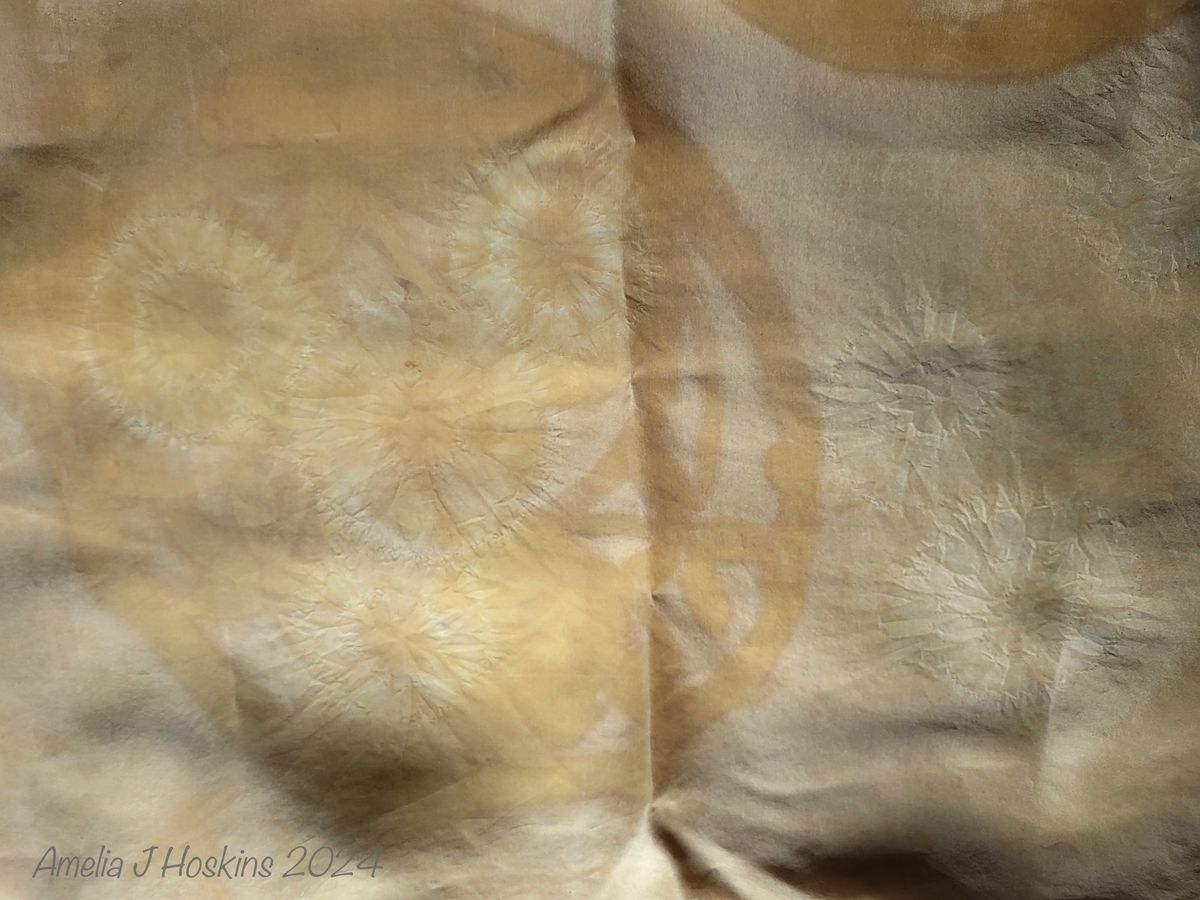Silk dyed with Rosehips in 2023 was very pale, so I decided to over dye with sage; leaves and twigs from a large autumn picking from my allotment. The first soaked piece (above image) produced a good deep ochre-gold; the second soaked piece produced a paler more yellow ocre. Both colours are subtle and acceptable for adding painted designs over. Currently Celtic Triskele designs, with additions.

Sage-dyed silk sample square showing the difference between sage ochre colour and Indian Bean Tree/raspberry cane dyed silk behind. The sage twigs and leaves were added to the pigment weakened dye bath.

Shibori stitching was experimented with again (as with the raspberry cane dyed silk);
stitching around the circles in the Triskele design, pulling tight to prevent dye sepedge.
Shapes were also painted in hot soya wax, so dye bath had to be barely warm to prevent melting of wax.

Silk Over-dyed with Sage
First soaking of predyed silk (rosehips) in sage dye bath.
Areas of design of Triskeles had been painted with soy wax heated resist. It always leaves a 'grease mark' or a darker dyed area; maybe a mixture of both. Shibori stitching for resist circles also used.

2nd soaking of silk in sage dyepot - pale ochre with dirty effect
Gutta was also used as resist but areas have turned bright yellow after rinsing and ironing. This may be concentrated dye areas, or a reaction with the gutta.
The design is vaguely apparent and the abstract effect is good. This effect will be seen behind top painting in colours.

Lemon juice was painted on the design outlines, but it wasn't very clear, so a professional discharge paste was used to give a clearer look to the Triskele designs, for working over. It worked well enough.
The abstract effect is still in the background, to leave some as is.
Triskele design outlined quickly with brush dipped in discharge paste - mix approximately of 5:3 water-paste is enough to do the job without risk of clogging the fabric (which happened on wool when paste applied 100%). New natural dye colours can now be added to the design in both yellow and paler discharged areas. The pale rosehip pink is visible after discharging. This photo taken while paste drying in window. Dried result is another paler ochre.


